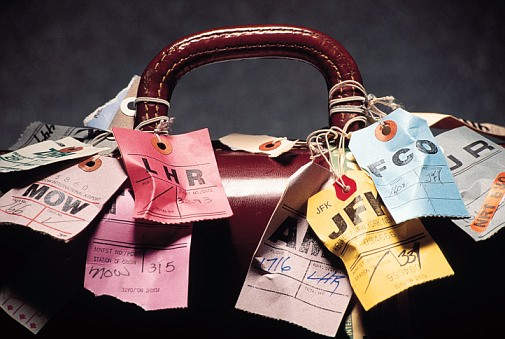Managing your baggage: Top tips to avoid common luggage issues
June 15, 2012 at 6:00 a.m.
Avoiding luggage problems while you're en route to your vacation destination -- whether that be the Caribbean or visiting the grandkids two states over -- is an essential part of ensuring that your good time isn't ruined by some of the unfortunate incidents that can occur when traveling. Follow the seven steps below to guarantee your belongings aren't lost, stolen, or otherwise tampered with.
- Adorn your flight luggage with your contact information. Make sure that the information is clearly visible on the outside of your bag, and also put your contact information inside the bag. If you're concerned that your home address might fall into the wrong hands, consider using an alternate address where your belongings could be delivered in the event you become separated from them. Another smart practice when adding your contact information to your flight luggage is to insert a copy of your travel itinerary so that if your luggage is accidentally sent to the wrong destination, the airline can get it forwarded to you more quickly.
- When possible, only travel with carry-on luggage. This simple trick can help prevent luggage problems because you'll never be separated from it. This may not be a possibility if you're going to be on vacation for an extended period of time, but if the trip is a short one, you'll not only protect yourself from the risk of losing your baggage, but you will also save money -- especially considering that airlines now charge extra for every piece of luggage that you check.
- Don't check bags that contain valuable items. This can include anything from expensive jewelry to laptop computers to medications. If you're going to be carrying more than one bag and will be forced to check at least one of them, be sure to group all of your expensive and irreplaceable items into a single carry-on bag that you can keep with you at all times.
- If you're going to be carrying on fragile belongings like a laptop computer or other electronic devices, don't stow them in the airplane's overhead bin since they could become damaged from an inadvertent fall. You'll have the opportunity to stow a smaller piece of luggage underneath the seat in front of you.
- Make your bag clearly distinguishable. Sometimes you'll see checked bags spinning around the airport's baggage carousel that stick out like a sore thumb, whether because of their color of because of blatantly added stickers and other adornments. This is a common practice that ensures you won't encounter typical luggage problems like someone mistaking your bag for theirs.
- Keep the ticket stub that you get when you check your baggage. Not everyone identifies the importance of these stubs and they can often become lost or are sometimes thrown away. But the reality is, these stubs are critical to being able to find and claim flight luggage if it's lost or subsequently found.
- Check the three-letter destination code that's stamped on your flight luggage. This will tell you precisely what airport your bag is headed for, and although the majority of the time a bag will make it to the right destination without incident, always account for the possibility of human error. The three-letter code should match up with the airport code of your final destination. If it doesn't match, don't let it go until it's been corrected.
Content Provided by Spot55.com





